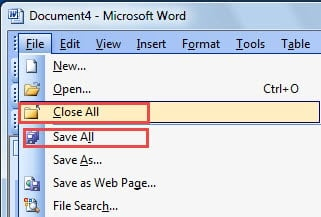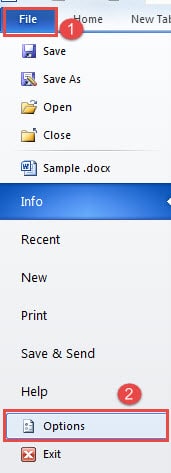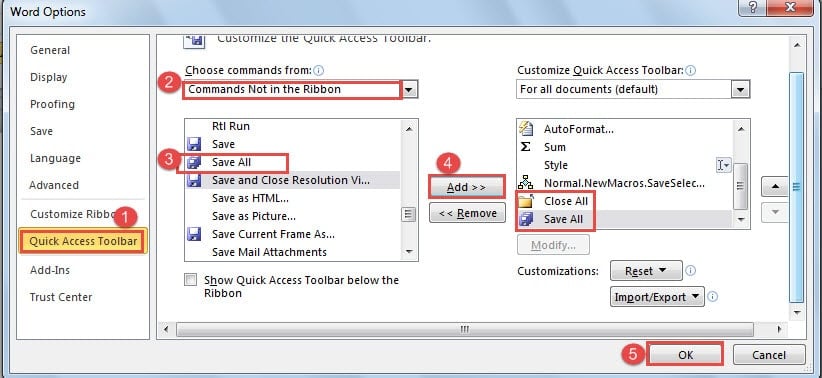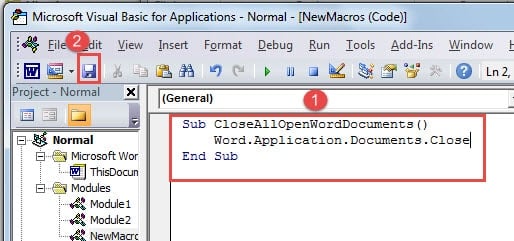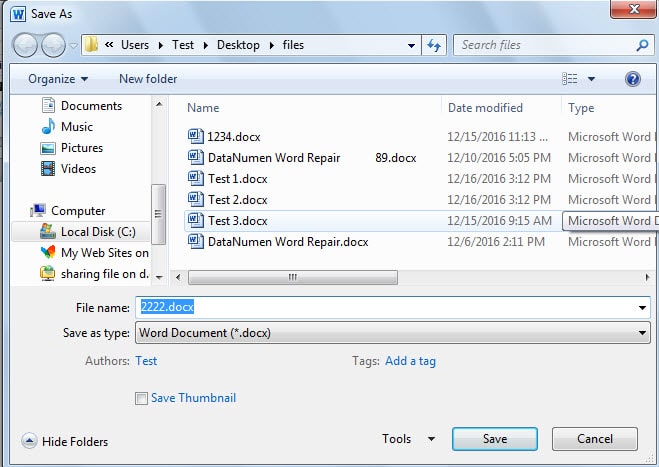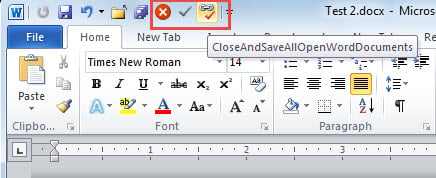In today’s article, we want to share you 2 ways to quickly save or close all open Word documents.
More often than not, when we are surfing on the Internet, we would like to open multiple web pages at the same time. Things are the same when we are dealing with Word documents. After making revisions or just simply looking through, some of you may bother to save and close them one by one.
Then how about learning some cool tricks to save your valuable time? Here are 2 ways you may find useful.
Method 1: Use “Save All” or “Close All” Feature
“Save All” and “Close All” are exactly tailored features that Word holds for its users. But things vary when different versions of Word are involved.
Case 1: In Word 2003
For users of Word 2003, when you click “File” on toolbar, you can see the “Save” and “Close” features, such as below: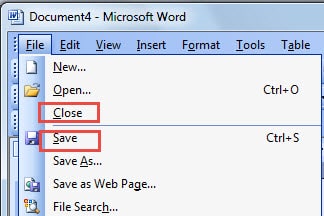
However, if you press “Shift” and hold on, then click “File”, you will notice “Save” and “Close” have changed into “Save All” and “Close All” respectively. Next, you can click either of them to fulfill your task.
Case 2: In Word 2007 and Later Versions
It’s been universally known that there is a section called Ribbon in Word 2007 and later versions of Word. Meanwhile, the “Save All” and “Close All” features are still available only after you add them to “Quick Access Toolbar”. Here are steps of how you can realize that:
- Firstly, click “File” tab.
- Secondly, click “Options” to open “Word Options” dialog box.
- Then click “Quick Access Toolbar” on the left-side column.
- Next choose “Commands Not in the Ribbon” from the drop-list of “Choose commands from”.
- Find and click “Close All”.
- Then click “Add”.
- Similarly, find and click “Save All” and click “Add”.
- Lastly, click “OK”.
Now you can click “Save All” to save all the changes you made in all documents open.
When you click “Close All”, you can close them all at once if you’ve saved them. If not, there will be boxes popping up, asking whether you want to save the change. And you will have to click “Save” for several times before close them off.
Method 2: Use VBA Codes
You have to know the VBA editor is such a wonderful tool which gets your customized commands done so perfectly and proficiently.
Just open Word first, and press “Alt+ F11”, then you will have the VBA editor open. Go and paste codes there and click “Run”. The mission will be accomplished in a jiffy.
Still, we will focus on 3 differentiating situations where the codes will defer a bit from one to another.
Situation 1: For Read Only
It’s likely that we open many documents just to read and compare. Thus no modification is made. Then you will need the following codes:
Sub CloseAllOpenWordDocuments()
Word.Application.Documents.Close
End Sub
Situation 2: Save Documents without Asking
The prompting box asking whether you want to save a file can be annoying sometimes. Then following codes are exactly what you will need:
Sub SaveAllOpenWordFocuments()
Word.Application.Documents.Save NoPrompt:=True
End Sub
And for those newly created documents, you will receive “Save As” window directly, where you can choose the storage location.
By the way, if you want to auto save your files, you can go to “File”, then click “Options”. And click “Save” in “Word Options” dialog box. Next you can change the period time for auto save.
Situation 3: Close and Save Documents Simultaneously
After making the last piece of revision, you need to save and close all open documents. Now with the bellowing codes, you will be able to accomplish them at once.
Sub CloseAndSaveAllOpenWordDocuments()
Word.Application.Documents.Save NoPrompt:=True
Word.Application.Documents.Close
End Sub
In order to use them the codes easily next time, you may want to add these macros to “Quick Access Toolbar”. For specific steps, please read How to Quickly Invoke another Application from MS Word
Cope with Word Collapse
No one can be immune to data loss. The bad luck can track you down all of a sudden. This is true to Word. Given to the fact that we use it almost every day, it would be an unimaginable catastrophe to have Word crushed, meaning your files are in great danger. Once documents get compromised, you can choose to recover them by using corrupt Word file recovery program.
Author Introduction:
Vera Chen is a data recovery expert in DataNumen, Inc., which is the world leader in data recovery technologies, including Excel data damage fix tool and pdf repair software products. For more information visit www.datanumen.com
